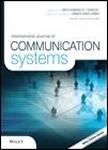版权所有:内蒙古大学图书馆 技术提供:维普资讯• 智图
内蒙古自治区呼和浩特市赛罕区大学西街235号 邮编: 010021

作者机构:Khalifa Univ Sci Technol & Res Elect & Comp Engn Dept ECE Abu Dhabi U Arab Emirates
出 版 物:《INTERNATIONAL JOURNAL OF COMMUNICATION SYSTEMS》 (Int J Commun Syst)
年 卷 期:2016年第29卷第6期
页 面:1091-1115页
核心收录:
学科分类:0810[工学-信息与通信工程] 0808[工学-电气工程] 0809[工学-电子科学与技术(可授工学、理学学位)] 08[工学]
主 题:camera sensor network maritime environment buoy full-view coverage cooperative transmission
摘 要:In stationary camera sensor networks (CSNs), when the deployment characteristics and sensing models are defined, the coverage can be deduced and remain unchanged over time. However, in the maritime environment, the rough and random sea condition can move CSN from the initial location. We envisage that camera sensors are mounted on quasi-mobile platforms such as buoys. Hence, it is important to understand the effect of realistic sea surface movements in achieving full-view coverage because in full-view coverage, target s facing direction is taken into account to judge whether a target is guaranteed to be captured because image shot at the frontal viewpoint of a given target considerably increases the possibility to detect and recognize the target. To accurately emulate the maritime environment, the movement of the buoy, which is attached with a cable that is nailed at the sea floor, has been characterized based on the sea wave that is created by the wind, and it is limited by the cable. The average percentage of full-view coverage has been evaluated based on different parameters such as equilateral triangle grid length, sensing radius of camera, wind speed and wave height. Furthermore, a method to improve the target detection and recognition has been proposed in the presence of poor link quality using cooperative transmission with low power consumption. In some parameter scenario, the cooperative transmission method has achieved around 70% improvement in the average percentage of full-view coverage of a given target and total reduction of around 13% for the total transmission power P-Total(Q). Copyright (c) 2015 John Wiley & Sons, Ltd.